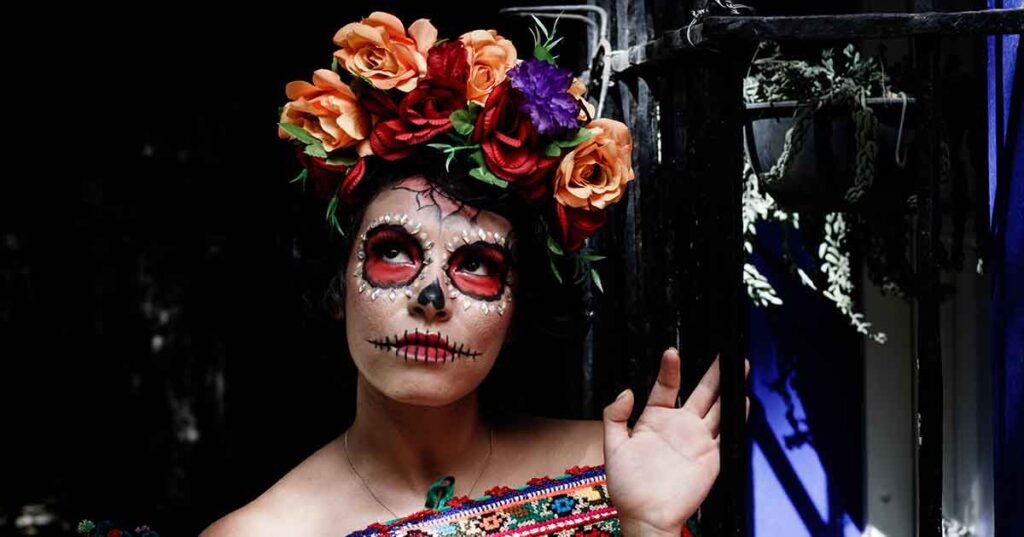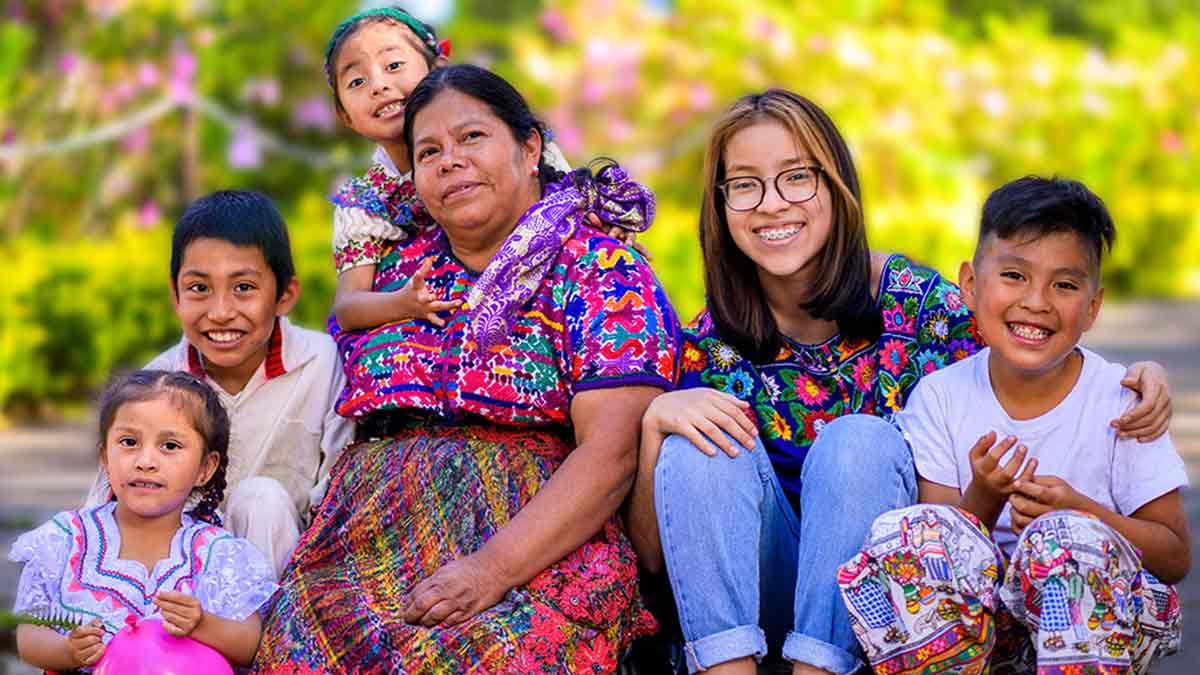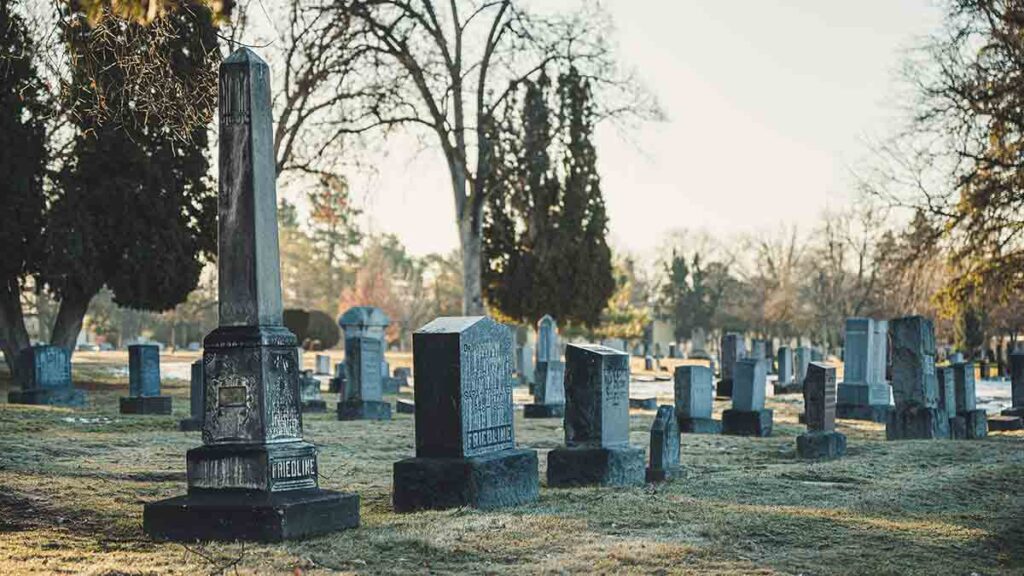
A celebration of death? No, not in today’s interpretation. Halloween today is a cute, innocent celebration. It’s an excuse to dress up in a costume, eat too much candy, and maybe seek some exciting but ultimately safe thrills in the local haunted house.
The roots of our autumn holiday tradition, however, is remembrance. They can be traced back to centuries-old festivals that honor death, remember deceased loved ones. It was a way to face the inevitable limits of the human condition. Death is mocked in some cultures, revered in others, and feared in many. The mystery surrounding the great unknown drives our need to acknowledge, ward off, or embrace the cycle of life.
Today, these festivals have morphed into something different. But mortality and the afterlife still remain central themes of our fall celebrations.
Mexico and Día de Los Muertos
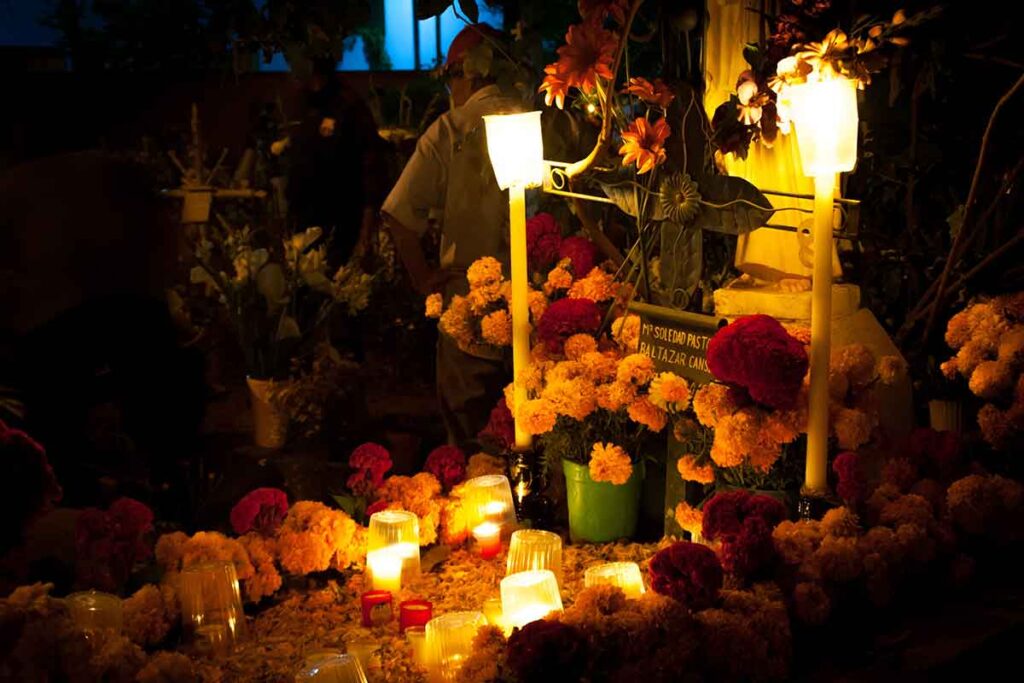
Día de los Muertos (or Day of the Dead) originated in Mexico. It is celebrated throughout Latin America. And even in many cities in the United States with large Latino/Latina populations. Indigenous Aztec and Mayan peoples created the holiday.
Traditionally, the holiday was a month-long celebration. But after the Spanish conquest of Latin America and introduction of Catholicism, the celebration was shortened to just two days (November 1–2). It aligns with All Saints’ Day and All Souls’ Day.
For Día de los Muertos, families construct altars to honor their deceased ancestors. They give ofrendas (or offerings) of food, marigolds, and items their loved ones enjoyed. They clean gravesites and wait for their ancestors to return to Earth.
One of the most famous symbols of the holiday is La Calavera Catrina — an elegant, skeletal woman in death. Printmaker José Guadalupe Posada created La Catrina in 1910. She symbolizes the disparity between the upper and lower classes; the notion that everyone, even the rich, will succumb to death; and the satirical views of death and mortality in Mexican culture.
Related: Mexico’s Grand Dame of the Dead, the Story Behind La Catrina
China’s Hungry Ghost Festival
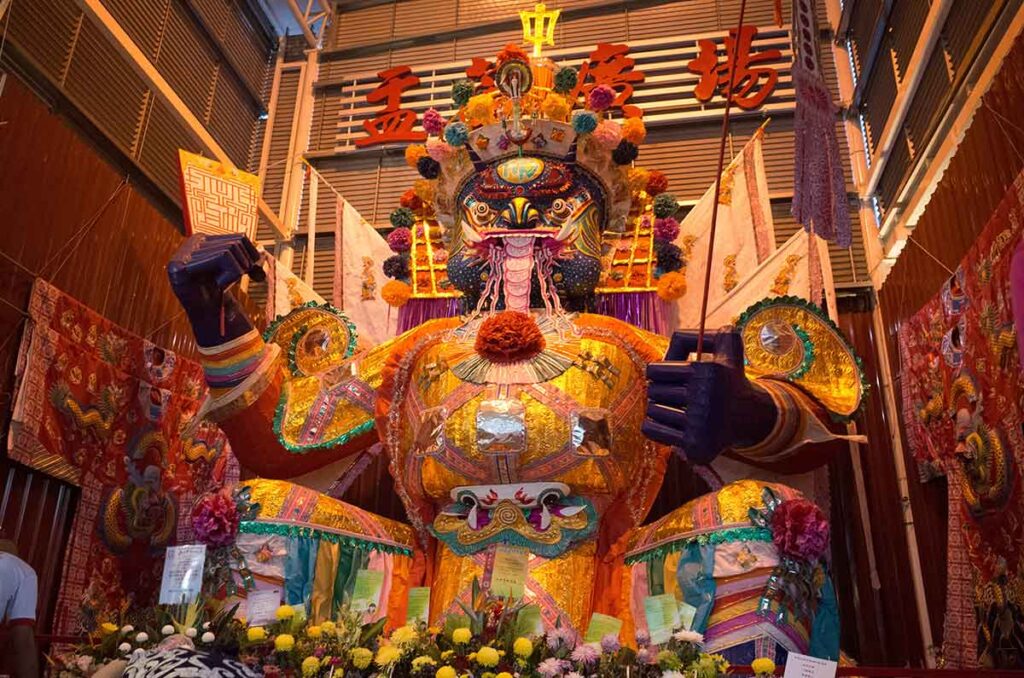
China has a few celebrations that honor the dead, but with important distinctions: For the Qingming Festival, the living visit the dead; for the Hungry Ghost Festival, the dead visit the living.
During the Qingming Festival (Tomb Sweeping Day), families pay respect to their deceased ancestors. They sweep their tombstones, give offerings of food and paper money, and pray for good fortune.
The Hungry Ghost Festival, which falls on the 15th day of the seventh lunar month, is part of the month-long celebration of Ghost Month. The benign ghosts of ancestors return to roam freely during this time. The open gates of hell let its souls seek food, libation, and entertainment.
The Hungry Ghost Festival is steeped in both Taoist and Buddhist traditions. For Taoists, the festival celebrates the birthday of Lord Qingxu, the celestial official of Earth (video). In Buddhism, its origins date back to the tale of Mu-lien, who rescued his mother — who became a hungry ghost because of transgressions she made against the gods whilst alive — from hell by offering food and gifts to monks and monasteries.
People burn incense and Joss paper, and offer sacrificial food to placate the dead for fear of retribution. The dead can become mischievous unless you make offerings.
Modernity has not slowed down activities of Ghost Month. To this day, people avoid traveling, moving into a new home, getting married, opening a new business, or even swimming lest a spirit sneak up and drown you.
Related: At the Hungry Ghost Festival, Rituals Appease the Dead
United States and Halloween
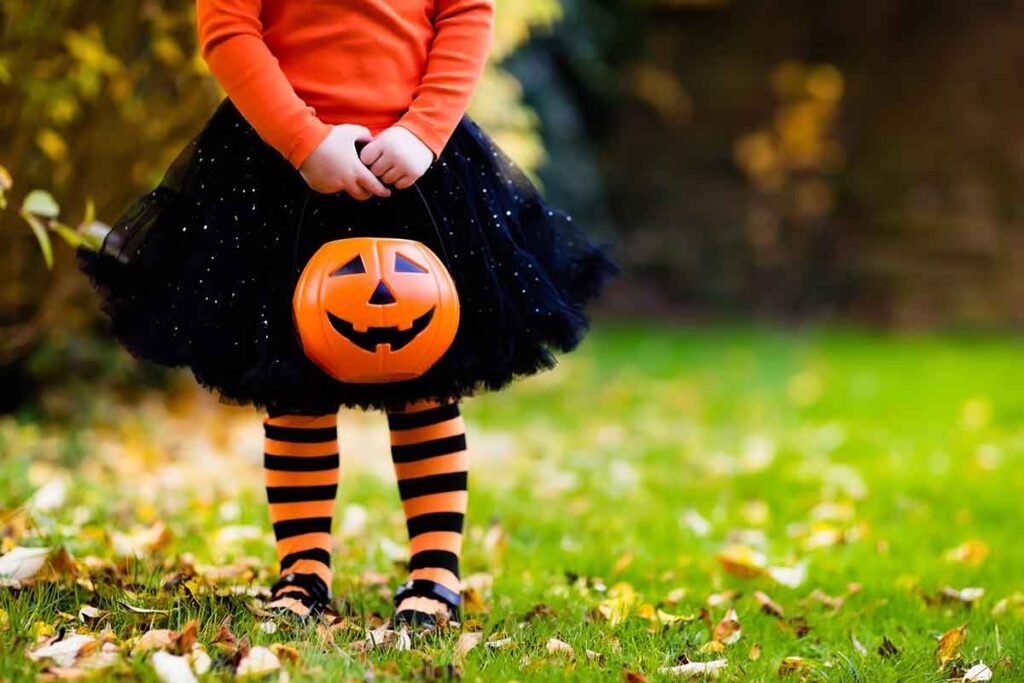
The origins of Halloween date back to the mass immigration of Irish people during the 19th century. Irish immigrants brought their traditions stemming from the Gaelic harvest festival of Samhain (pronounced Sow-in) to the U.S., which eventually became widely celebrated and commercialized into Halloween’s current iteration.
Samhain is a pagan holiday that marked the end of the pastoral cycle, and was also referred to as the Celtic New Year. (Just as important as the end of one cycle was the beginning of another.)
The Celts believed that the veil between the world of the living and dead weakened at this time, allowing the spirits of the dead and feisty “otherly” beings to roam freely and mingle with the living. To honor the dead who passed during the year before, the Celts burned large bonfires, left out food as a sacrifice, and wore masks to confuse the dead to keep them away from the living.
Though Halloween has diverged greatly from its pastoral origins, remnants still exist with activities such as wearing costumes, carving pumpkins, and bobbing for apples.
One thing that is missing, however, is the reality of death. Americans don’t use Halloween as a time to explore death as a shared experience, look at its inevitability, or celebrate the ones we’ve loved and lost — just as our neighbors do in Latin America.
Halloween today is more about fear and denial than it is a celebration.
Journalist Oliver Burkeman says we could stand to embrace it a little more around this time of year. “Collective annual Halloween rituals more closely resembling the Day of the Dead would make a bigger difference,” states Burkeman in Slate. “There’s no need to spurn the pumpkin-carving or the zombie costumes. But wouldn’t multigenerational graveyard parties provide a meaningful complement to that?”
Join the Club: Register for our “Open For Interpretation” newsletter…

